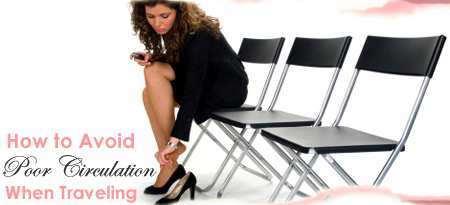
Tips for Avoiding Circulatory Problems
When Traveling
by Dr. Luis Navarro, M.D.
With the holidays upon us many are traveling to see family and friends, which may mean sitting at airports and traveling for hours on end. What many do not know is that sitting for long periods of time causes poor circulation, which can lead to unsightly veins.
Here are effective tips from Dr. Luis Navarro, medical director of The Vein Treatment Center that can help avoid poor blood flow from sitting too long on an airplane, in a car or on a train while traveling.
Tips Include:
-
AVOID PROLONGED PERIODS OF SITTING AND STANDING: Walk up and down the plane/train every 1-2 hours, when possible, for 5-10 minutes
-
GET EXERCISE: ankle and lower leg exercises, such as ankle rotations
-
WEAR GRADUATED COMPRESSION STOCKING: Wear stockings, preferably knee highs with open toe, 15-25mm/hg or 20-30mm/hg
-
STAY HYDRATED: Double your water intake when traveling
-
AVOID ALCOHOL: Alcohol dehydrates so avoiding alcohol a few days before taking a long trip would be a good idea
-
AVOID CAFFEINE: Avoid caffeine while traveling to help prevent poor circulation.
-
AVOID CROSSING YOUR LEGS: Leg crossing constricts veins and increases venous pressure.
-
WEAR LOOSE-FITTING CLOTHING: Tight garments can restrict the flow of blood to and from the legs.
-
ELEVATE YOUR FEET: Raise your feet 6 to 12 inches above your heart whenever possible to assist circulation.
-
CONSIDER DIETARY SUPPLEMENTS: Vitamins C and E act as antioxidants, which are good for circulation. Flavonoids, butcher's broom, and Horse Chestnut Seed Extract (HCE50) improve venous circulation and decrease symptoms of venous disease.
About: Dr. Luis Navarro, M.D.
Director: Vein Treatment Center, New York
Diplomat: American Board of Phlebology
|